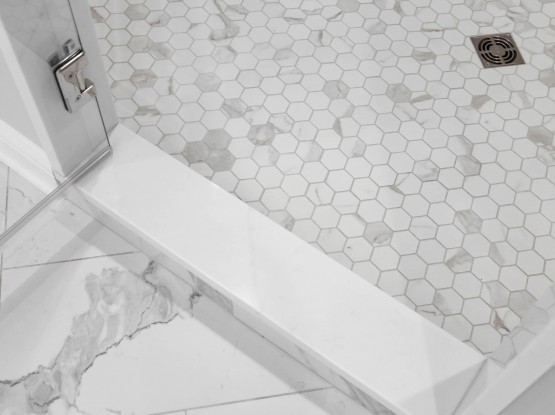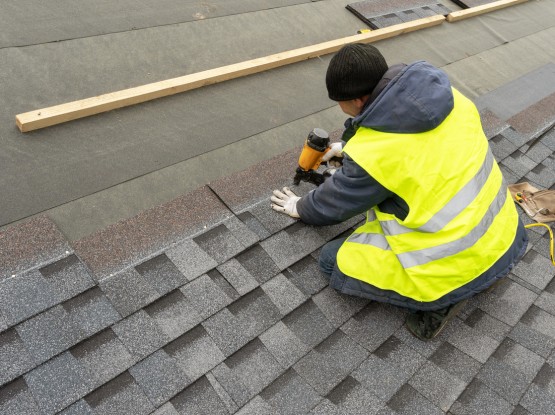If you’re from the Buckeye state, you know our winters mean business, which is why we put together this home winterization checklist for Ohio residents to help you survive until spring.
Most of us know how to bundle up and get ourselves through the snowy days and frigid nights of an Ohio winter, but when it comes to caring for a home, we find that many people don’t know all the important things they can do to protect it. That’s why keeping a home winterization checklist handy is so vital.
This list is not all inclusive, but we use it as our basic home winterization checklist when we talk with our customers about what they need to do. These seven basic items, many of which you can do on your own, will help you lower your utility bills and protect your home’s long-term value.
Protect Your Home With This Home Winterization Checklist
Fix drafty doors and windows
The true pain of an Ohio winter can be felt in drafty homes. Have you ever walked barefoot across a tile floor on a 0-degree day? If you have, you either have good insulation or a death wish.
To help keep your feet warm, start your home winterization checklist by checking all the weatherstripping around windows and door frames for leaks to prevent heat loss. Replace weatherstripping, if necessary. If the gaps between siding and window or door frames are bigger than the width of a nickel, you need to reapply exterior caulk. Silicone caulk is best for exterior use because it won’t shrink and it’s impervious to the elements. Inspect windows for cracks, broken glass, or gaps. Repair or replace, if needed.
Replace all screen doors with storm doors. Replace all window screens with storm windows. Examine wooden window frames for signs of rot or decay.
Take care of drains, gutters, and your roof
If your gutters are full of debris, water can back up against the house and damage roofing, siding, and wood trim — plus cause leaks and ice dams (see more on these dam things below). Check the gutters and downspouts for proper fastening, and resecure if loose. The weight of snow and ice can pull gutters off the house.
Make sure downspouts extend away from the house by at least 5 feet to prevent flooding of the foundation and water damage from snow melt. Clean leaves and debris from courtyard and pool storm drains to prevent blockages. Ensure all vents and openings are covered to prevent insects, birds, and rodents from getting inside to nest in a warm place.
Check for missing, damaged, or warped shingles and replace. Check for deteriorated flashing at the chimney, walls, and skylights and around vent pipes. Seal joints where water could penetrate, using roofing cement and a caulking gun.
Get a check-up for your HVAC
In July, Ohio can be muggy enough to make you crank the A/C on high all day. But around Valentine’s day, you better hope you can crank your heat up enough to keep the frost off your windows. For just a few hours of labor, a technician can inspect your furnace or heat pump to be sure the system is clean and in good repair, and that it can achieve its manufacturer-rated efficiency. The inspection should also measure carbon monoxide leakage.
Manage the ice
If there’s one thing Northeast Ohio gets plenty of each winter, it’s ice. Many homes get lots of icicles, or worse, ice dams, which can cause meltwater to back up and flow into your house. Ice dams are continuous chunks of ice that form along the margins of your roof. During the warmer parts of a winter day, they turn into water and that water can seep underneath your shingles. Sometimes water can work its way 5 or even 10 feet back up under the shingles. Eventually, it drips through the roof into the soffits, walls, and worst of all, onto your ceilings.
The key to preventing ice dams is simply to keep your attic and roof cold. After a snowfall, a cold roof will have a thick blanket of snow. A warmer roof, however, will soon have clear spots where the snow has melted off, and may well have icicles hanging from the eaves. The key steps to keeping your roof cold are: closing up the attic bypass, measuring your attic insulation level, and adding roof/soffit vents.
Test your sump pump
Put this one high up on your home winterization checklist! The dead of winter is not the time to find out that you have a faulty sump pump. This is something you can test in any season pretty easily. Slowly pour several gallons of water into the sump pit to see whether the pump turns on. You should do this every few months, but especially after a long dry season or before a rainy/wet one. The manual for your sump pump may recommend other tips on how to test it, but this becomes even more critically important as it ages. Most sump pumps are built to last around 10 years, so if yours is more than a few years old, go test it now!
Prep your tools and machinery
The Ohio cold and precipitation, mixed with downtime, can be hazardous on your tools and machinery. Bring all seasonal tools inside and spray them with a coating of lightweight oil to prevent rust.
Weatherize your lawn mower by cleaning off mud, leaves, grass, and debris. As the mower sits through the winter, fuel remaining in its engine will decompose, causing difficulty when you try to start the engine in the spring. If you’ve added stabilizer to your fuel to keep it fresh longer, then fill the gas tank to the top with more stabilized fuel and run the engine briefly to allow it to circulate. If not, wait until the tank is nearly empty from use, take the mower outside, and run the engine to use up the remaining fuel.
Move your snow blower and shovels to the front of the garage or shed for easy access. Prepare the snow blower for the first snowfall by changing the oil and replacing the spark plug. Sharpen ice chopper and inspect snow shovels to make sure they’re ready for the task of breaking up that Ohio ice and sleet that feels like it can break your back. Make sure you have an ample supply of ice melt or sand on hand for steps, walkways, and the driveway.
Keep up your yard, deck, and patio
The final tip in our Ohio home winterization checklist is for the part of your property you’ll rarely see in a bad Midwestern winter. But just because you may not see your grass or your deck in February and March, doesn’t mean you can completely forget about it. Fall may have passed us already, but use any clear weekend to focus on trimming overgrown branches back from the house and electrical wires to prevent iced-over or wind-swept branches from causing property damage or a power problem.
Inspect outdoor lighting around the property. Good illumination will help minimize the chance of accidents on icy walkways at night. Check handrails on exterior stairs and your deck/patio to make sure they’re well secured.
Ensure rain or snow drains are away from the house to avoid foundation problems. The dirt grade — around the exterior of your home — should slope away from the house.
Remove any attached hoses and store them away for the winter to prevent cracks, preserve their shapes, and prolong their lives. Wrap outside faucets with covers to prevent water damage. Shut off exterior faucets. Undrained water in pipes can freeze, which will cause pipes to burst as the ice expands. If you don’t have frost-proof faucets (homes more than ten to 15 years old typically do not), turn off the shut-off valve inside your home. Drain water from outdoor pipes, valves, and sprinkler heads to protect against pipe bursts.
Inspect decks for splintering, decay, or insect damage and treat, if needed, to prevent further deterioration over the winter. Clean leaves, dirt, and pine needles between the boards of wooden decks to thwart mold growth. Clean and dry patio furniture. Cover with a heavy tarp or store inside a shed or garage to protect it. Clean soil from planters. Bring pots made of clay or other fragile materials indoors.
At Malek Construction, our team works hard to make you feel right at home. Need professional help checking items of this home winterization checklist to get you through the Ohio winter? Contact us and we’ll help you make your list and get it done.





